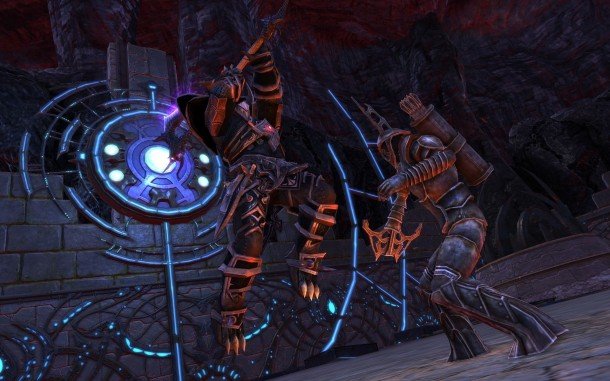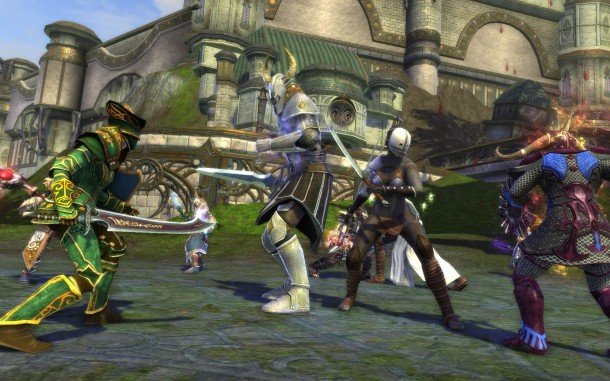Rift: Storm Legion trebles the size of the game, fills it with colossal beasts

This article originally appeared in issue 245 of PC Gamer UK.
Storm Legion trebles the size of Rift's already-huge MMORPG world. Senior designer William Cook flashes up the game's map for me, showing the play area of the original Rift. The two new continents the studio are adding are each as big as the original game. More space is always nice, but the reason that they need these new continents is the scale of some of the enemies: 'colossi' encountered on the new continent are humungo-scale monstrosities, often the size of tower blocks.
The demo I see shows one of these, the Brobdingnagian world boss Volan, awakening from his crypt and roaring like a sleepy bear. He obviously isn't a morning colossi and, after a typically MMO-y boss battle that involves players bashing bits of his armour off to expose his weak points, he smashes through a high wall. This manifest grumpiness allows players into an otherwise inaccessible section of the continent. Like many of Rift's enemies, the colossi are present in the open world, so anyone can join a group battling them.
They need these new enemies because, in the plot of Rift, four of the six Dragon Gods are dead. Only two remain – the god of death, Regulo, and the god of air, Crucia, and they've fled to these lost continents, Brevane and Dusken. Here ancient technology enables permanent access to the other planes: the Infinity Gate, an always-open portal to the other worlds, allowing the dragon gods to conduct full-scale invasions.

Cook shows me the Empyrean Core on Brevane, an abandoned marvel of Cyclopean buildings. He promises that in this dungeon “you're seeing the origins of Telara”. I don't see Dusken but Cook tells me it's a mutated ruin, the battleground of the gods of air and death, and the location of the Infinity Gate. It's likely the focus will be on Crucia, as the Storm Legion is her personal dragon cult. I'd bet that Regulos is being saved for another expansion.
Just to remind you, in Rift each calling (class) chooses three souls (specialisations) for each build - and swaps between these builds, out of combat. Souls each have their own tech tree to invest in and, with Storm Legion, Trion have rejigged all the current souls and raised the level cap from 50 to 60, so players have many more points to invest.
There are four new souls as well, which Cook promises will add an “entirely new flavour to each calling”, though I only got to see one: the Harbinger, a mage close-combat soul. Most of his abilities reduce subsequent cast times, so he cooperates well with the Chloromancer, Pyromancer and Stormcaller souls, turning them into melee souls too: with the Pyromancer he can blink in and out of combat, and cast fireballs with no cooldown, while with the Stormcaller he becomes a lightning AOE specialist, and becomes a healing melee specialist with the Chloromancer.
Keep up to date with the most important stories and the best deals, as picked by the PC Gamer team.

The game is also introducing Player and Guild dimensions – its version of housing. This allows you to grab your favourite area of Telara (from a selection) and turn it into your own play area, with customisable, scalable cosmetic objects that can be crafted or found throughout the world. You can also alter the weather and lighting by placing objects. From the demo I saw, it's easy to use and you can be quite creative with your personal space.
Storm Legion also includes 11 new zones; three new raids; new planar bosses to battle; grandmaster crafting; new mounts, pets, puzzles, artefacts, collectibles, and titles; and a new island-based capital city shared by the two factions.
As the last subscription-based MMORPG to make money without endless talk of going free-to-play, Rift is a curiosity to be praised. The team is fan-oriented, putting out free updates like the Conquest expansion, that are pure fan service. I'm pleased it's doing well enough to expand on this scale – and intrigued to see how many players go back to play.

